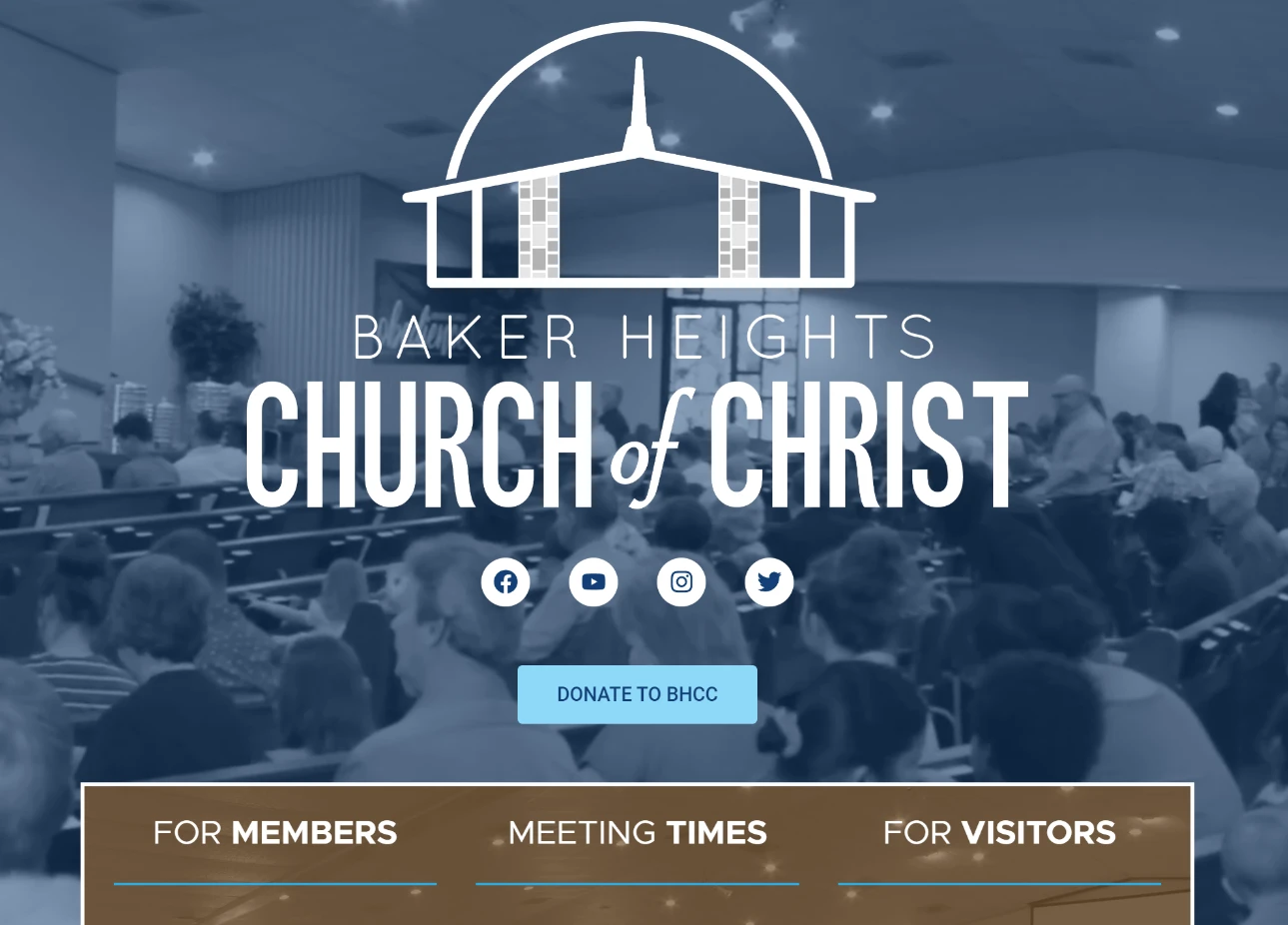About the Author
Jordan Fuller is a retired golfer and businessman. When he’s not on the course working on his own game or mentoring young golfers, he writes in-depth articles for his website, Golf Influence.
We all know that golf and business go hand in hand. But did you know that you can use principles from the sport – including golf psychology – to improve your business decision-making?
Golf is about much more than just swinging your clubs. When you really get down to the core of it, golf is about mental resilience, focus, and the ability to make smart decisions in pressured situations.
In the business world, these traits set you apart. So next time you’re on the golf course, remember that you’re also using valuable golf psychology to improve your decision-making, focus, and cognitive skills. Here’s how.
At first glance, golf and business might seem worlds apart, even though business is done on the golf course so often! But dig a little deeper, and you’ll find that they’re a lot more similar than they initially seem… And both build on the foundations of problem-solving and decision-making.
As a golfer stands on the tee, he needs to decide on how to play the shot. Likewise, business people need to strategize smartly in order to forge ahead. Both require effective pressure management, smart strategy, and capitalizing on opportunities.
In golf, each shot requires a bit of strategic thinking, from tee to green. You need to think a few moves ahead, factoring in things like wind, terrain, and course hazards.
Business isn’t all that different. Leaders need to think strategically about each deal every step of the way. Factors to keep an eye on include market trends, what the competition is doing, and potential risks.
On the golf course, you’ll inevitably come up against risk/reward shots. Here, you’ll need to choose between playing it safe or taking a risk that could either lead to an even greater reward or to losing a ball.
In business, you need to weigh up the pros and cons of each move, whether it’s an investment opportunity, a potential new partnership, or budgeting. Do the potential returns outweigh the risks?
Golfers need to continuously work on their game if they want any hope of improving their handicap. This might involve investing in coaching, practicing often, and getting feedback on their swing.
Similarly, business people should be constantly striving to get better at what they do. Learning new things, honing existing skills, and being open to feedback are essential to improve.
Golfers can’t let one bad shot ruin their whole round. Business people can’t let one failed deal ruin their flow. Both golfers and business people need to be able to handle setbacks with mental strength.
Both becoming a better golfer and becoming a better businessperson require effort and patience. Building a good handicap and building a business take constant work.
On the golf course, you’ve got to choose every golf club carefully based on the shot you’re taking. In the business world, it’s all about allocating resources intelligently, whether it’s capital, time, or manpower.
 Integrity and Ethics
Integrity and EthicsGolf isn’t called a gentleman’s game for nothing. Golfers are expected to be honest about their scores and follow the rules even when nobody else is watching. In the same vein, companies are expected to maintain ethical standards, be transparent, and act with integrity.
Things can change fast on the golf course. Golfers need to be able to adapt to sudden challenges, like wind, other weather, or unexpected hazards. In business, being able to adapt and pivot is crucial in the case of sudden changes in the market or unexpected challenges.
Golf psychology is all about optimizing your mental state to boost your performance on the golf course. While there is some physical aspect to the game, it’s largely about mental toughness, focus, and resilience. It comes down to a few key factors:
Did you know that Oprah Winfrey credits a lot of her business success to visualization… a secret she learned from sports psychology? And she’s not the only business leader who’s used sports-related psychology to get ahead in their field. Here’s how to apply golf psychology to business and start seeing your own success.
Golfers know that you can’t sink a putt when you’re distracted. And businessmen know that you can’t close a deal if your mind is somewhere else. Distracted decisions lead to missed putts… Or lost deals. Boost your concentration by:
Mindfulness is all about being mentally present in the moment. It ties in closely with focus—being able to silence all distractions and focus on what you have to do in the moment. Use mindfulness to your advantage by:
Some golfers have a pre-shot routine; a little shuffle, a tap on the ground, a shake of the head. It might be more mental than physical on the course, but in business, having a pre-decision-making routine can be invaluable. It may include:
Whether you’re heading to the course for a round or going into the boardroom for a business meeting, having clear, defined goals is the foundation for success. Here’s how:
Ready to start putting your golf psychology to good use in the office and not just on the course? Use this as an excuse to get out on the golf course more often if you like, but don’t just swing away without thought or consideration. Consider the psychology of the game carefully and take those skills from the fairways to the boardroom to boost your business decision-making skills.
In an era where change is the only constant, digital marketing is no exception to the rule.
As businesses all over the globe embrace this virtual era, the realm of marketing has also experienced a paradigm shift. Today’s discerning consumers demand more than just products or services; they seek an exceptional experience that is customized, convenient, and value-driven.
The challenge for businesses, then, is not only to fulfill these expectations but also to anticipate them.
That’s where the power of foresight comes into play.
Foresight in digital marketing is the ability to predict and prepare for future trends, challenges, and opportunities. It acts as an invisible compass, guiding marketers toward sustainable success while avoiding potential disasters.
This article explores how the implementation of strategic foresight in digital marketing can ensure business resilience and customer delight.
Strategic foresight, an innovative business discipline that has grown in popularity over the last two decades, refers to the systematic anticipation and preparation for future trends, opportunities, and challenges.
Essentially, strategic foresight involves a shift from reactive decision-making to proactive planning, bridging the gap between the present and the future.
The Global Strategic Foresight Community established in 2014 recognized its importance as a tool for long-term planning, risk management, and opportunity recognition. This community emphasizes the use of strategic foresight to anticipate changes in the business environment, allowing organizations to pivot or innovate effectively.
Strategic foresight is particularly beneficial for companies operating in rapidly evolving sectors such as technology, healthcare, and eCommerce. It aids them in staying ahead of the curve by spotting emerging trends and potential disruptions early on.
Businesses spanning industries—from tech giants like Google and Apple to consumer goods companies such as Procter & Gamble—have all integrated strategic foresight into their planning and decision-making processes.
Even small businesses and startups are starting to see the value of this approach, as it equips them with the tools to navigate uncertainty and shape their future.
With its critical role in facilitating resilience and innovation, strategic foresight is transforming the way we approach planning and strategy in the 21st century. It arms businesses with the capacity to:

There are several key approaches to utilizing strategic foresight to avoid marketing disasters and ensure customer delight:
One of the most effective approaches to avoiding marketing disasters is by prioritizing a customer-centric mindset. This means understanding your target audience, their needs, preferences, and pain points.
By conducting thorough market research, engaging in customer feedback mechanisms, and leveraging data analytics, you can tailor your marketing strategies to align with customer expectations. This customer-centric approach reduces the risk of misalignment, enhances customer satisfaction, and minimizes the chances of a marketing disaster.
For example, Shopify integrations provide businesses with robust data analytics capabilities, including customer segmentation, purchase behavior analysis, and demographic insights. By utilizing these tools, businesses can conduct thorough market research and gain a deeper understanding of their target audience.
Horizon scanning is a vital component of strategic foresight in digital marketing. It involves systematically monitoring the external environment to identify emerging trends, technologies, and societal shifts that could impact your industry or target market.
By staying ahead of the curve, you can proactively adjust your marketing strategies and capitalize on emerging opportunities while avoiding potential disasters.
Horizon scanning techniques include:
Scenario planning is a powerful tool for envisioning alternative futures and their potential implications. It involves developing multiple plausible scenarios based on different assumptions and drivers of change.
By exploring these scenarios, businesses can identify potential marketing disasters and devise strategies to mitigate their impact. Scenario planning also helps in identifying emerging customer needs and developing innovative solutions to meet them.
To enhance your foresight capabilities, it is essential to involve cross-functional teams and stakeholders in the process. Collaborative foresight brings together diverse perspectives and expertise, enabling a holistic understanding of potential risks and opportunities.
By involving representatives from marketing, product development, sales, customer service, and other relevant departments, you can uncover blind spots, challenge assumptions, and develop more robust strategies. This collaborative approach fosters a shared understanding of the market landscape, aligns organizational goals, and reduces the likelihood of marketing disasters.
Despite the best efforts, unexpected crises may still arise. To mitigate the impact of potential marketing disasters, it is crucial to have a crisis preparedness plan in place. This plan should outline the steps to be taken in the event of a crisis, including communication protocols, crisis response teams, and contingency measures.
By anticipating potential crises, preparing response strategies, and conducting simulations or drills, you can minimize the damage caused by unforeseen events. A well-prepared crisis response plan helps you maintain trust, transparency, and credibility with your customers, even during challenging times.

In today’s volatile digital marketing landscape, foresight is no longer a nice-to-have; it’s a must-have. Implementing foresight in your digital marketing strategy can help avoid potential marketing disasters and delight your customers with unmatched experiences.
It is important to remember that foresight doesn’t guarantee certainty. However, it provides a lens to view potential futures, giving you the best chance to navigate your way to success. It’s about creating a proactive, adaptable, and customer-focused approach that sets your business up for sustainable growth.
In the rapidly evolving digital landscape, traditional advertising and marketing strategies for franchises are undergoing a profound transformation. Today, franchises must adapt to changing consumer behavior and leverage digital tools to stay relevant and competitive. Enter franchise marketing systems. Franchise systems are the comprehensive frameworks designed to streamline marketing efforts, maintain brand consistency, and drive local engagement. In this article, we will delve into the concept of franchise marketing systems for the digital age. We will explore the key elements, benefits, and strategies that empower franchises to thrive in the modern business landscape.
Franchise marketing systems are strategic frameworks designed to create cohesion and consistency across a franchise network’s marketing efforts. In fact, they establish standardized guidelines, tools, and processes that ensure a unified brand identity and message. Franchise standards allow localized marketing initiatives. Offering many advantages, these systems are especially vital for franchises with multiple locations, as they help maintain a consistent brand experience across diverse markets while accommodating regional differences.
To begin with, a well-defined brand identity and guidelines are at the core of every franchise marketing system. These guidelines encompass elements like brand colors, logos, typography, tone of voice, and overall brand messaging. By adhering to these guidelines, franchisees can maintain a consistent brand image that customers recognize and trust, regardless of location.
Next, you’ll find that franchise marketing systems provide access to a centralized repository of marketing collateral and assets. This repository typically includes templates for advertisements, brochures, social media graphics, and other promotional materials. Franchisees can customize these materials with localized information while adhering to brand guidelines, ensuring a consistent look and feel across the franchise network.
While brand consistency is crucial, franchise marketing systems also recognize the importance of localized marketing efforts. Franchisees can leverage the system to create targeted campaigns catering to their local audience’s preferences and interests. This flexibility lets franchises connect with customers personally, fostering stronger relationships and driving local engagement.

Kicking of the list of advantages, one of the primary advantages of franchise marketing systems is their ability to ensure brand consistency and recognition. Maintaining a consistent brand identity builds consumer trust and reinforces the franchise’s reputation. Customers who encounter a familiar brand experience across different locations are more likely to choose the franchise over competitors.
Then, you’ll appreciate the franchise marketing systems offer cost efficiency by centralizing marketing efforts and providing standardized templates and assets. Franchisees can save time creating marketing materials from scratch, which can be time-consuming and expensive. Instead, they can utilize pre-approved fabrics, conserving resources while maintaining brand consistency.
Consider, franchise marketing systems significantly reduce the time and effort required to execute marketing campaigns. Franchisees can access pre-designed materials, marketing calendars, and automation tools, streamlining the entire process from planning to execution. This efficiency allows franchisees to focus more on customer interactions and business growth.
While maintaining brand consistency, franchise marketing systems provide flexibility for localized marketing initiatives. Franchisees can tailor their campaigns to suit the preferences and needs of their local audience, resulting in increased engagement and a stronger connection with customers.
Not to be overlooked, many franchise marketing systems incorporate analytics and reporting tools, providing valuable data-driven insights. Franchisees can track the performance of their marketing efforts, measure key performance indicators (KPIs), and make informed decisions based on data. This data-driven approach allows franchises to improve their marketing strategies and optimize their results continually.
To fully harness the potential of franchise marketing systems in the digital age, franchisors and franchisees should consider the following strategies:
And now, the digital age offers an array of marketing channels, including social media, search engine marketing, email campaigns, and influencer marketing. Franchise marketing systems should integrate these digital channels into their strategies to reach a broader audience and engage with customers online.
User-friendly marketing platforms encompass various tools. These tools include content management systems (CMS), customer relationship management (CRM) software, and email automation. Such tools as these can simplify the marketing process for franchisees. Implementing these assests ensures seamless execution and consistency across all franchise locations.
Effective implementation of franchise marketing systems requires proper training and ongoing support for franchisees. Providing comprehensive training on using the system and its marketing tools empowers franchisees to execute campaigns efficiently while adhering to brand guidelines.
Regular monitoring and measurement of marketing campaigns are critical for success. Franchise marketing systems should incorporate analytics tools to track the performance of various marketing initiatives. Importantly, analyzing data allows franchisees to identify successful strategies. Data also allows the owner to make data-driven decisions to optimize their future efforts.
Open communication and collaboration between franchisors and franchisees are essential for successful marketing campaigns. Regular meetings, webinars, and forums provide a platform for sharing insights, best practices, and success stories, fostering a strong community within the franchise network.
In the dynamic and ever-changing digital age, franchise marketing systems have emerged as indispensable tools for franchises to navigate the complexities of modern marketing. By creating brand consistency while allowing localized engagement, these systems strike the perfect balance for franchise success. The benefits of franchise marketing systems, including brand recognition, cost efficiency, time savings, and enhanced local engagement, highlight their transformative potential in the digital landscape.
As franchisors and franchisees embrace change and innovation, incorporating digital marketing channels and user-friendly platforms, they can effectively leverage franchise marketing systems to drive business growth and seize new opportunities in the digital age. By fostering collaboration, monitoring performance, and offering comprehensive training, franchisees can ensure that their marketing efforts remain relevant, impactful, and successful in evolving consumer behavior and technology trends.
In conclusion, franchise marketing systems serve as the catalysts that empower franchises to thrive in the dynamic digital landscape, creating a future where brand consistency, localized engagement, and innovation coexist harmoniously to maximize franchise opportunities and drive sustainable growth.
In recent years there has been a dramatic shift in working patterns for millions of staff worldwide. The first main indication of this change happened out of necessity rather than choice, as the Covid-19 pandemic in 2020 forced businesses to adapt quickly to movement restrictions placed upon populations by governments.
To slow the spread of the virus and to protect essential healthcare facilities from being overburdened, millions needed to stay home. Businesses reacted to this by allowing remote work for their staff members. Many companies had to learn how to set up remote workers. Others learned some of the problematic things about team members working outside the office. Cloud-based applications, video conferencing software, and remote access were crucial in this transition.
Today in 2023, millions of workers enjoy remote or hybrid working models. This article discusses ways businesses support the long-term move to remote working models while ensuring business continuity and productivity remain high.
One of the critical challenges to remote working is older office-based telephone systems. Designed to be used by staff in one physical workspace, these systems use a network of copper wire to make and receive calls. This hard-wired device is challenging to upgrade to support remote working.
However, to make the transition effortless, switch to session internet protocol (SIP) telephony systems. Many people ask: “What is SIP trunking?” as the terminology is unknown. SIP trunking uses internet-based connections rather than physical networks to make and receive calls.
These internet-based networks are easily modified to re-route calls to employees’ phones and support text and video chat. With Internet-based technologies, remote staff remain in contact with other staff and broader stakeholders.
One of the critical threats that remote working poses is the risk of creating a culture of silo working. This is where individuals are reluctant to share information with the broader team or need to be made aware of the progress made by other staff on a project, which leads to the duplication of work.
In short, silo working damages an organization’s productivity and create a toxic working culture. Thankfully, technology minimizes these risks in a remote workforce.
By using a mix of project management software, team communication apps, and video conferring platforms, enable progress in specific tasks and communicate more effectively. Click here for examples of task management apps that ensure coordinated working from team member

While remote working is highly effective in most instances, and is, in fact, even favored by many staff members, there are still benefits from having occasional team-building meetings in a shared physical location.
Team building can be hard to cultivate and improve without in-person contact between staff members. It is a good business practice to hold a staff “away day” twice a year where people can communicate directly with each other and improve their working relationships.
These events should contain fun team-building activities encouraging collaboration, problem-solving, and discussion.
When your business specializes in manual labor related services, like construction, you may believe that much of the conversation around digital marketing does not apply to you. However, you may be pleased to learn that there are areas of online marketing that can prove to be beneficial to your business. Like other businesses, your labor services need consistent branding offline as well and online. And, establishing a digital footprint will increase your audience awareness and translate into more customers.
To guide you in ways to utilize digital technologies, we recommend using some of the tools available online. Using every tool at your disposal can help your business reach its full potential, regardless of whether you initially think a tool applies to you.
First, we recommend that you take advantage of the digital marketing tools available online. For example, you’re likely already using social media. However, you may not be utilizing your social media pages with consistent posting and engagement. It’s true that social media is a handy tool for businesses. It is a free platform that connects you with a range of audiences. From existing customers to potential customers, you can create messages that connect with the right groups in your social media platforms. Often overlooked, is the use of social medial to reach your local audience and drive them to your website. Your social media pages provide additional links to your website. Social links to your site connect promotional offers in greater detail than can be shared on a social media post.
In contrast to social media, you may not be utilizing all the benefits that come from search engine optimization (SEO). SEO can be complicated. It requires both time and talent to optimize the pages of your website in order to get organic traffic from search engines. At the same time, SEO is a powerful digital tool that your construction business should take advantage of. If you are trying to reach a local audience or a larger audience, there are some SEO tactics you should employ.
SEO is a slower process that social media marketing, but SEO helps your website rise above your competition on the search engines. So think of the benefit of SEO this way. Your business has many competitors. When a potential customer goes online to search for a construction company, the customer chooses one brand over another based on where they are listed in the search results page. SEO helps your company climb higher on the search results page. Tools like SEO enable one company to gain that edge in visibility over another company.
While you may like the idea of being able to do everything yourself, that won’t often work out how you want. That’s okay. You are the professionals in your field. However, when you need help with other aspects – bringing the pros with the know-how and experience to round out the edges can often be the best call.

You want your brand to be impeccable. To achieve this goal, you must instill quality in every aspect of your service. From customer service, to sales, and from accounting to marketing, your service must consistently be top notch. Another example is your website. A digital destination that isn’t visually appealing or intuitive can deter customers from wanting to know more about it, which can be rectified with the right professionals. Still, you must also know why certain things are effective, and others aren’t.
Looking internally, however, can draw your attention to issues like finance. Now, finance in business is something that requires a knowledgeable mind, even when speaking broadly. While it might be something that you’re thinking of handling yourself, this isn’t an area in which you want to find yourself making mistakes, and that means looking to accountants for help. However, construction finances is a specialized field in and of itself, so knowing suitable professionals like those at New Lyfe Accounting can make all the difference between understanding your financial situation as thoroughly as possible and the alternative.
While you might feel as though you only need what you currently have to do your job effectively, it’s also worth considering how you can improve the service you provide for the sake of the customer. After all, if the customer feels they can experience a more favorable transaction with one of your competitors, that might be what convinces them to switch. Operating online often means offering conveniences – such as how specific venues and businesses might provide an option to book online instead of through phone or email.
Once again, overhauling your website to offer your customers more features and customization likely requires technically-minded professionals. Even if it means you must become more acquainted with how that works, it’s a leap that can become enormously beneficial. This means you have to hire some people ready to deal with these new aspects of your website, as otherwise, you may not find your current team able to handle the additional load.
Lastly, as you look at the digital tools you may need to operate professionally, online security deserves some consideration. As you deal with customers’ confidential information – both in terms of your business documentation and the sensitive data you’re handling from customers. You want to ensure your data and documentation is as protected as possible. The protection extends from accidents to malicious attacks. To that end, seeking out software and digital professionals who can bolster your defenses and inform you of any breaches, is a must. Along those lines, cloud technology is worth considering.
In conclusion, developing an online presence of a secure professional website that is optimized for good search engine results will serve your construction company well. In addition, maintain a robust social media presence that links back to your website and attracts new audiences. The time you invest to learning more about the ways to enhance your online presence will serve your business well and help you be more successful overall.
Welcome to 2023, a year that’s unfolding with the potential to reshape the business. Innovation races forward, consumer behavior shifts, and the marketing world keenly adapt. The hottest marketing trends and marketing methods promise to blend modern, high-tech strategies and timeless, proven tactics. There needs to be more time to delve into what these methods entail and their impacts on various business landscapes.
To begin with, let’s fasten our seatbelts and prepare for an enlightening journey into the heart of 2023’s marketing arena. This deep dive promises to unveil the tactics worth investing time and resources into, which could deliver a significant return on investment and potentially revolutionize how businesses connect with consumers. As you will see, from cutting-edge digital marketing trends to the surprising resilience of traditional methods, this exploration of marketing in 2023 promises to be insightful and actionable. Let’s set off on this thrilling journey.
While not the main character in today’s marketing narrative, print has found its niche in the digital world. This dichotomy between traditional and digital gives it its unique appeal.
In 2023, the key to maximizing the impact of print media lies in strategic integration with digital efforts. QR codes, augmented reality (AR) features, billboards, or simple URLs in print ads can guide consumers to online platforms. Marketers can only engage audiences with information that fits into print ads.
Next, let’s shift gears and talk about social media, the marketing darling of the last decade. Businesses realize the potential of social media as a platform for customer service and engagement. Replying to comments, addressing concerns promptly, or sharing user-generated content adds a personal touch.
Newer platforms such as TikTok have become indispensable parts of a comprehensive marketing plan, each with its distinct user base and content styles. It’s a riveting game of knowing where the target audience is and tailoring messages to engage them effectively.

Undoubtedly, every conversation about 2023 marketing methods must recognize the meteoric rise of e-commerce and the role influencers play. These collaborations provide a win-win scenario for all parties. Brands get exposure, influencers get sponsorship, and consumers get products they trust from personalities they admire.
With this in mind, brands are still looking at partnerships and creating customized online shopping experiences using VR and AR technologies. Consumers can “try” products virtually before purchasing, creating a fun, interactive, and engaging shopping experience.
All in all, the adage “content is king” still holds water. High-quality, SEO-optimised content continues to be a primary driver for organic traffic. Google’s algorithm updates require marketers to stay on their heels, optimizing their content to remain relevant and visible. For example, both local businesses and businesses with a national focus benefit from adopting SEO best practices.
Content marketing has become more interactive and multi-dimensional, with infographics, podcasts, webinars, and more. Gone are the days of the monotonous 500-word blog post. Variety is indeed the spice of content marketing life in 2023!
The exploration of the diverse marketing methods of 2023 draws to a close with some noteworthy observations. A critical element that emerges across these techniques is the ongoing evolution and amalgamation of digital and traditional methods. Altogether, this progression, driven by technological advancements and a dynamic consumer landscape, dictates the current marketing scenario.
Far from a one-track approach, a broad perspective appears essential for success in 2023. The ability to adapt to changes, navigate challenges, and push forward is crucial. As the marketing world continues, standing still doesn’t cut it. The focus must be ongoing learning, adaptation, and willingness to embrace new opportunities.
In the ever-evolving world of architecture, some buildings transcend the ordinary and become symbols of human ingenuity and creativity. Skyscrapers have long been synonymous with modern architecture. However, there is a fascinating realm beyond them, where innovative designs and visionary concepts redefine the essence of a building’s purpose.
In this blog post, we will embark on a journey to explore some of the most captivating modern architectural icons that have reshaped the world’s urban landscapes and captured the imagination of millions.

To begin, no exploration of modern architectural icons would be complete without mentioning the awe-inspiring Burj Khalifa in Dubai, UAE. Soaring at a staggering height of 828 meters (2,717 feet), it holds the title of the tallest building globally. This is truly a testament to human ambition and engineering prowess.
Designed by Adrian Smith of Skidmore, Owings & Merrill, the Burj Khalifa’s sleek, tapering structure rises gracefully from the desert sands. Without mistake, when gazing upon the design, one cannot help but feel the sense of grandeur. Its exterior features a combination of glass and stainless steel,. The building reflects the changing hues of the desert sun and the azure sky, creating a captivating spectacle.

Next, as we move away from the skyscraper typology, the Lotus Temple in New Delhi, India, is a serene and unique architectural marvel. Shaped like a blooming lotus flower, Fariborz Sahba designed the temple and served as the Bahá’í House of Worship.
Composed of 27 free-standing marble-clad “petals,” the building symbolizes purity, peace, and unity. With its emphasis on harmony with nature, the Lotus Temple beckons visitors of all faiths to contemplate and find solace amidst its tranquil ambiance.

Venturing into the heart of Cornwall, England, we encounter the Eden Project, a groundbreaking ecological attraction designed by Sir Nicholas Grimshaw. Comprising a set of enormous geodesic domes, the project is home to the world’s largest indoor rainforest.
Undoubtedly, these iconic biomes house an astounding variety of plant species from diverse climates. To that end, they serve as living laboratories for ecological research and education. The Eden Project highlights the importance of environmental conservation and sustainable design. Visitors are inspired to connect profoundly with the natural world.

Architect Frank Gehry’s brilliance shines through in the Walt Disney Concert Hall in Los Angeles, USA. Renowned for its undulating stainless steel facade, the building celebrates fluidity and movement. The design itself reflects Gehry’s vision of music in physical form.
As home to the Los Angeles Philharmonic, the concert hall boasts exceptional acoustics and a visually stunning interior that complements the exterior’s dynamic design. This architectural gem is a testament to the seamless integration of art, music, and architecture..

Zaha Hadid Architects’ masterpiece, the National Museum of Qatar, is an architectural gem that pays homage to the country’s cultural heritage. Inspired by the desert rose, a mineral formation in Qatar’s arid regions, the building’s interlocking discs, and curvilinear forms create an otherworldly landscape.
The museum’s exhibitions and galleries chronicle the nation’s history, art, and traditions, immersing visitors in Qatar’s rich past while being surrounded by an exquisite architectural marvel of the present.

Uniquely, The Zeitz Museum of Contemporary Art Africa (MOCAA) in Cape Town, South Africa, is housed within a transformed grain silo complex. Designed by architect Thomas Heatherwick, the structure’s most striking feature is the extraordinary atrium, carved from the original concrete tubes of the silos.
The building’s repurposed design is a poignant symbol of urban regeneration and transformation. As one of the world’s largest contemporary art museums, Zeitz MOCAA showcases the work of African artists, making it a cultural beacon in the continent’s heart.

Finally, as we complete our journey with a return to skyscrapers, the Shanghai Tower in China stands tall as a sustainable design and functionality masterpiece. Gensler designed this 632-meter (2,073-foot) tower stands in the heart of Shanghai’s Lujiazui district. The tower’s twisting form reduces wind loads and optimizes energy efficiency.
It features nine vertical zones. Additionally, each zone serves as a self-contained city with offices, hotels, retail spaces, and gardens. This innovative approach to urban density makes the Shanghai Tower an exemplar of the future of urban living.
Without question, modern architecture continues to evolve and push boundaries, as shown by some of the most iconic structures of our time. Beyond the dazzling heights of skyscrapers, architects have truly flexed their creative muscles with buildings like the Lotus Temple and the Shanghai Tower. These structures are breathtakingly beautiful and represent the epitome of sustainable innovation.
Looking ahead, it is exciting to envision what new icons will emerge, especially with the use of welding technology, which is revolutionizing the construction industry. Undoubtedly, future architects will continue to dream up awe-inspiring designs that capture our imagination and change our world.
For further reading, check out our category that covers industry-related topics of oil and gas, real estate, and law.
The digital age has brought about a paradigm shift in how businesses function. In this new reality, websites have ascended to become critical elements of the corporate infrastructure. Not just static pages, modern websites have transformed into dynamic, interactive platforms that act as virtual representations of a business in the online world. Seamless integration and effortless connectivity between these websites and other digital media have also grown.
Behind this facade of seamless digital interaction, a robust system works tirelessly, making these complex connections possible. The true wizards behind this technological marvel are Application Programming Interfaces, commonly known as APIs. These are the gatekeepers and facilitators of the modern digital landscape, enabling software applications to interact, share data, and function harmoniously. APIs might seem arcane in the grand scheme of things, but their role is central to the digital experience we often take for granted. So, let’s embark on a journey to demystify APIs and delve into their compelling world.
Often overlooked, APIs serve as invaluable contributors to digital technology. They mediate between software applications, facilitating dialogue and promoting data exchange and functionality. Recently, APIs have emerged as pivotal instruments in website integration, enabling smooth connectivity across various platforms.
Are you familiar with the term API management solutions? These nifty tools monitor and control APIs within a secured environment. Essentially, they establish a connection between diverse software applications, enabling dialogue and data exchange.
API management solutions can simplify integration, offering proficient control over the API ecosystem. They manage, secure, and scale APIs across multiple platforms, assuring fluid connection and communication amongst different applications.
APIs are essential driving forces behind website integration. They provide the foundational elements facilitating interactions and information sharing between software programs, resulting in fluid connections across various platforms. Whether it’s the integration of social media feeds on a website or facilitating online transactions, APIs are the fulcrum that keeps everything running smoothly.
Further, APIs allow websites to draw real-time data from multiple sources, making the content dynamic and personalized. From providing live weather updates to the latest stock market trends, APIs work tirelessly to keep your website current, relevant, and connected.

An efficiently integrated website is inconsequential if it fails to deliver a superior user experience. APIs step in here as well. By enabling the integration of various services and platforms, APIs amplify the user experience on a website.
Consider, for example, a customer exploring an e-commerce website. APIs can provide features like live order tracking, online payment options, and customer reviews. All these elements converge to create a fluent and enjoyable shopping experience for the customer.
In conclusion, the importance of APIs in website integration and fluid connections should be more emphasized. They form the invisible task force working relentlessly to ensure a seamless and efficient digital experience, whether for the end-user or the business proprietor. By harnessing the power of APIs and API management solutions, businesses can fuel integration, augment user experiences, and maintain connectivity in the digital sphere.
Indeed, we live in an exciting era, with APIs spearheading the move towards a more cohesive and connected future. Ultimately, in the digital realm, connectivity and integration are not mere luxuries but fundamental requirements.
If you are looking for other ways to integrate your digital footprint, a digital dashboard is one way to pull all of the data and stats from your website and social media into one interface. Here is our recently trending article on Digital Dashboards.









